-
 Bitcoin
Bitcoin $111300
-0.83% -
 Ethereum
Ethereum $4296
-0.28% -
 XRP
XRP $2.970
-0.28% -
 Tether USDt
Tether USDt $0.0000
0.01% -
 BNB
BNB $876.7
-0.13% -
 Solana
Solana $216.7
0.50% -
 USDC
USDC $0.9998
0.01% -
 Dogecoin
Dogecoin $0.2424
1.50% -
 TRON
TRON $0.3345
0.88% -
 Cardano
Cardano $0.8635
0.03% -
 Hyperliquid
Hyperliquid $53.38
5.54% -
 Chainlink
Chainlink $23.07
0.27% -
 Ethena USDe
Ethena USDe $1.001
0.02% -
 Sui
Sui $3.463
-0.21% -
 Stellar
Stellar $0.3738
-0.33% -
 Bitcoin Cash
Bitcoin Cash $578.5
-1.51% -
 Avalanche
Avalanche $26.00
2.07% -
 Hedera
Hedera $0.2276
0.77% -
 UNUS SED LEO
UNUS SED LEO $9.548
0.02% -
 Cronos
Cronos $0.2597
2.73% -
 Litecoin
Litecoin $112.0
-0.64% -
 Toncoin
Toncoin $3.089
-0.29% -
 Shiba Inu
Shiba Inu $0.00001285
-0.10% -
 Polkadot
Polkadot $4.098
1.54% -
 Uniswap
Uniswap $9.484
-0.88% -
 Ethena
Ethena $0.8361
8.06% -
 Dai
Dai $0.9998
0.01% -
 Monero
Monero $269.5
-0.68% -
 World Liberty Financial
World Liberty Financial $0.1994
-4.02% -
 Aave
Aave $299.1
-1.29%
How does the KuCoin Futures API function for automated trading?
The KuCoin Futures API enables secure, programmatic trading via REST and WebSocket, supporting order execution, real-time data streaming, and position management with HMAC authentication and rate-limited requests.
Aug 13, 2025 at 11:35 am
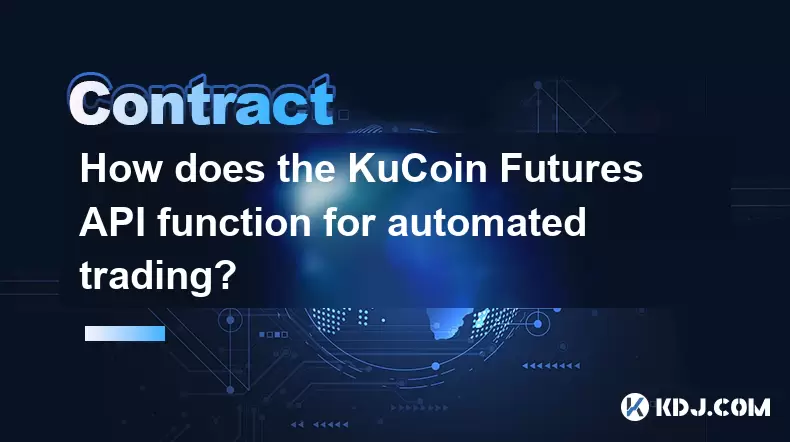
Understanding the KuCoin Futures API Structure
The KuCoin Futures API is a RESTful and WebSocket-based interface that enables developers to interact programmatically with KuCoin's futures trading platform. It supports essential operations such as placing orders, retrieving market data, managing positions, and monitoring account balances. The API is built on HTTPS for secure communication and uses JSON for request and response formatting. To authenticate, users must generate API keys from their KuCoin account dashboard, which include an API Key, Secret Key, and Passphrase. These credentials are used to sign each request with HMAC-SHA256 encryption, ensuring secure access.
Each API endpoint corresponds to a specific function, categorized into public endpoints (e.g., ticker data, order book) and private endpoints (e.g., placing orders, position management). The base URL for the Futures API is https://api-futures.kucoin.com. All private requests must include headers such as KC-API-KEY, KC-API-SIGN, KC-API-TIMESTAMP, and KC-API-PASSPHRASE. The timestamp must be in milliseconds and synchronized with KuCoin’s server time to prevent replay attacks.
Setting Up API Keys for Automated Trading
To begin using the KuCoin Futures API, you must first create API credentials through your KuCoin account. Navigate to the API Management section under the security settings. When creating a new API key, select the Futures permission and assign either Read-Only or Trade access. For automated trading bots, Trade permissions are required. You can also restrict the IP addresses that can use the key for added security.
After generating the key, store the API Key, Secret Key, and Passphrase securely. Never expose these in client-side code or public repositories. The Secret Key is used to generate the signature for each private request. A typical signature generation process involves concatenating the timestamp, HTTP method, endpoint path, and request body (if any), then hashing the result with HMAC-SHA256 using the Secret Key. This signature is included in the KC-API-SIGN header.
Executing Futures Orders via the API
Placing a futures order programmatically involves sending a POST request to the /api/v1/orders endpoint. The request body must include parameters such as:
- clientOid: A unique identifier generated by the client to prevent duplicate orders
- side: Either buy or sell
- symbol: The contract symbol, such as XBTUSDM
- type: limit, market, stop_limit, or stop_market
- price: Required for limit orders
- size: The number of contracts to trade
- leverage: The desired leverage level (e.g., 10x, 25x)
For example, to place a limit buy order for 10 contracts of XBTUSDM at $40,000 with 10x leverage:
{ 'clientOid': 'abc123xyz', 'side': 'buy', 'symbol': 'XBTUSDM', 'type': 'limit', 'price': '40000', 'size': '10', 'leverage': '10'}The API responds with an order ID and status. You can then use the /api/v1/orders/{orderId} endpoint to check execution status or cancel the order.
Managing Positions and Risk Programmatically
The KuCoin Futures API allows bots to monitor and manage open positions in real time. The endpoint /api/v1/positions returns a list of all active positions, including details like current size, entry price, liquidation price, unrealized PnL, and leverage. This data is crucial for risk management algorithms.
To close a position, use the /api/v1/orders endpoint with a market order that offsets the current position size. For instance, if you hold a long position of 5 contracts, send a sell market order for 5 contracts. You can also set take-profit and stop-loss orders using conditional order endpoints like /api/v1/stopOrders. These orders trigger when the market reaches specified prices, helping automate risk control.
Adjusting leverage is possible via the /api/v1/positions/leverage endpoint. Send a PUT request with the symbol and leverage value. This is useful when market volatility changes and you need to reduce exposure.
Streaming Real-Time Market Data with WebSocket
For low-latency automated trading, the KuCoin Futures WebSocket API provides real-time updates on order books, trades, and index prices. Connect to wss://ws-api-futures.kucoin.com/endpoint and subscribe to topics such as:
/contractMarket/level2:{symbol}– Full order book with top 100 levels/contractMarket/tickerV2:{symbol}– Real-time ticker updates/contractMarket/execution:{symbol}– Trade execution data/contractMarket/indexPrice:{symbol}– Index price feed
To subscribe, send a JSON message:
{ 'id': '123', 'type': 'subscribe', 'topic': '/contractMarket/level2:XBTUSDM', 'response': true}The server responds with a confirmation and begins streaming data. Bots can use this feed to detect price changes, arbitrage opportunities, or execute high-frequency strategies. Heartbeat messages are sent every 15 seconds; missing them may result in disconnection.
Common Errors and Troubleshooting in API Usage
Even with correct setup, developers may encounter errors. Common HTTP status codes include:
- 401 Unauthorized: Usually due to incorrect API credentials or signature
- 400 Bad Request: Invalid parameters or missing fields
- 429 Too Many Requests: Rate limit exceeded
- 503 Service Unavailable: Server temporarily down
The API enforces rate limits: 600 requests per minute for most endpoints. Exceeding this results in temporary bans. Use exponential backoff in your code to handle throttling. Always validate request payloads and ensure timestamps are within 30 seconds of KuCoin’s server time, retrievable via /api/v1/timestamp.
Signature errors are frequent. Double-check that the string to sign includes the exact timestamp, method, endpoint, and body (if present), and that the HMAC hash is Base64-encoded.
Frequently Asked Questions
Can I use the same API key for both spot and futures trading?No, KuCoin requires separate API keys for spot and futures. When creating a key, you must explicitly select Futures as the permission scope. Using a spot-only key for futures endpoints will return a 403 Forbidden error.
How do I handle order cancellation in case of network failure?Always use a clientOid when placing orders. If a network issue occurs, use the /api/v1/orders endpoint with the clientOid parameter to check if the order was accepted. If confirmed open, send a DELETE request to /api/v1/orders/{orderId} to cancel.
Is testnet support available for KuCoin Futures API?Yes, KuCoin provides a sandbox environment at https://sandbox-futures.kucoin.com. Use this to test your bot without risking real funds. Generate separate API keys from the sandbox dashboard.
What happens if my bot exceeds the rate limit?The API will return a 429 status code. Your bot should pause for at least 60 seconds before resuming. Implement a request queuing system with delays to stay within the 600 RPM limit.
Disclaimer:info@kdj.com
The information provided is not trading advice. kdj.com does not assume any responsibility for any investments made based on the information provided in this article. Cryptocurrencies are highly volatile and it is highly recommended that you invest with caution after thorough research!
If you believe that the content used on this website infringes your copyright, please contact us immediately (info@kdj.com) and we will delete it promptly.
- Bitcoin, XRP, and Crypto Signals: Navigating the Current Landscape
- 2025-09-10 10:45:12
- ApeCoin Moonshot: What Crypto Traders Need to Know Now!
- 2025-09-10 10:25:14
- MYX Airdrop Alert: Synchronized Wave of Claimed Addresses – What's the Deal?
- 2025-09-10 10:25:14
- Bitget Wallet, USDC Yield, and Aave: A New Era for Crypto Savings?
- 2025-09-10 10:45:12
- XRP Price Eyes $5, MAGACOIN Finance Sparks Pair Trade Buzz: A New York Minute on Crypto
- 2025-09-10 10:50:12
- Cloud Mining, Stability, and the Crypto Market: Navigating Uncertainty in 2025
- 2025-09-10 10:50:12
Related knowledge
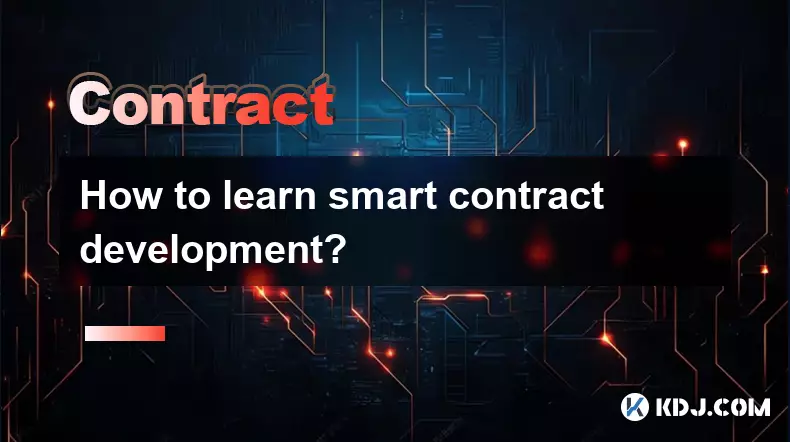
How to learn smart contract development?
Sep 09,2025 at 02:18am
Understanding the Foundation of Smart Contracts1. Smart contract development begins with a solid understanding of what smart contracts are—self-execut...
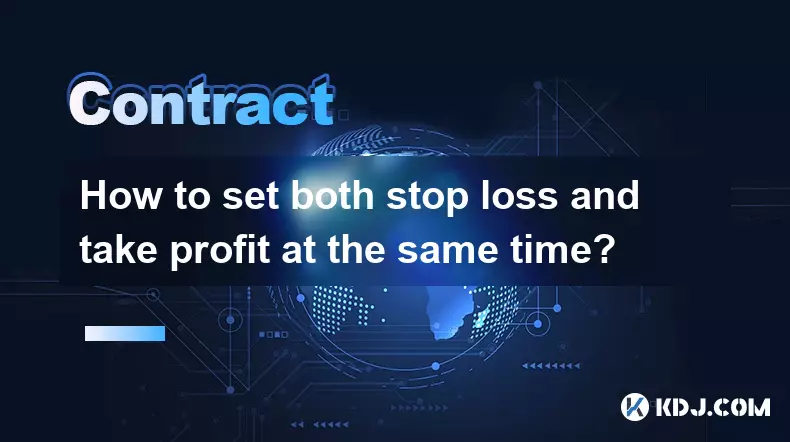
How to set both stop loss and take profit at the same time?
Sep 06,2025 at 04:36pm
Understanding Simultaneous Stop Loss and Take Profit Orders1. Placing both stop loss and take profit orders at the same time is a standard practice in...

What is copy trading for crypto futures?
Sep 07,2025 at 02:00am
What Is Copy Trading in Crypto Futures?1. Copy trading in crypto futures allows investors to automatically replicate the trades of experienced traders...
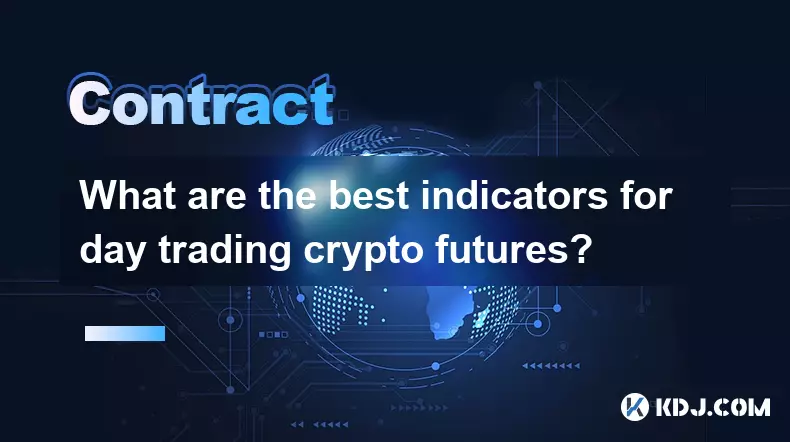
What are the best indicators for day trading crypto futures?
Sep 08,2025 at 10:18am
Top Technical Indicators for Crypto Futures Day Trading1. The Relative Strength Index (RSI) is widely used to identify overbought or oversold conditio...
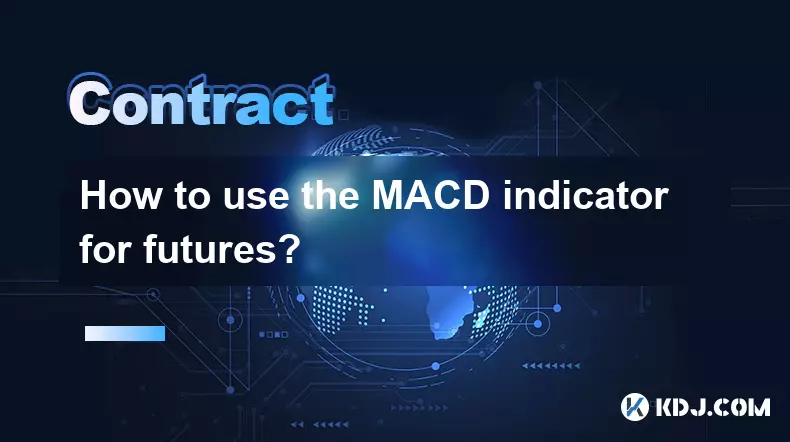
How to use the MACD indicator for futures?
Sep 07,2025 at 09:00pm
Understanding the MACD Indicator in Futures Trading1. The MACD (Moving Average Convergence Divergence) indicator is a momentum oscillator widely used ...

What to do if you are about to be liquidated?
Sep 06,2025 at 01:00am
Understanding Liquidation in the Crypto Market1. Liquidation occurs when a trader’s margin balance falls below the required maintenance margin, forcin...

How to learn smart contract development?
Sep 09,2025 at 02:18am
Understanding the Foundation of Smart Contracts1. Smart contract development begins with a solid understanding of what smart contracts are—self-execut...

How to set both stop loss and take profit at the same time?
Sep 06,2025 at 04:36pm
Understanding Simultaneous Stop Loss and Take Profit Orders1. Placing both stop loss and take profit orders at the same time is a standard practice in...

What is copy trading for crypto futures?
Sep 07,2025 at 02:00am
What Is Copy Trading in Crypto Futures?1. Copy trading in crypto futures allows investors to automatically replicate the trades of experienced traders...

What are the best indicators for day trading crypto futures?
Sep 08,2025 at 10:18am
Top Technical Indicators for Crypto Futures Day Trading1. The Relative Strength Index (RSI) is widely used to identify overbought or oversold conditio...

How to use the MACD indicator for futures?
Sep 07,2025 at 09:00pm
Understanding the MACD Indicator in Futures Trading1. The MACD (Moving Average Convergence Divergence) indicator is a momentum oscillator widely used ...

What to do if you are about to be liquidated?
Sep 06,2025 at 01:00am
Understanding Liquidation in the Crypto Market1. Liquidation occurs when a trader’s margin balance falls below the required maintenance margin, forcin...
See all articles
























































































